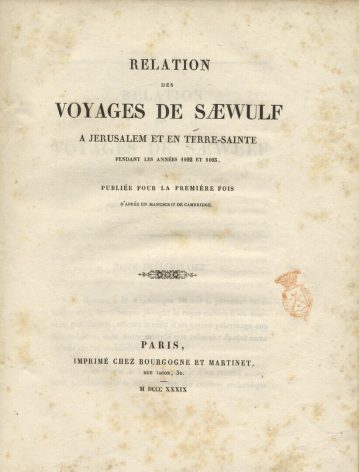Relation des voyages de Saewulf à Jérusalem et en Terre-Sainte pendant les années 1102 et 1103.
Saewulf, Peter Damian-Grint fl. 1102–1103.
Synopsis
Saewulf was a layman and a trader, who went on a pilgrimage in 1102, and became a monk at the insistence of his confessor, Wulfstan, Bishop of Worcester. But though his narrative has been called an immense advance from all earlier guidebooks, it ends with the Holy Land and does not even touch the outlying pilgrim sites, in Mesopotamia or Egypt, which were visited and described by both Silvia and Fidelis.
Starting some three years after the Latin capture of Jerusalem in 1099, the English traveller takes us up six different routes from Italy to Syria, evidence of the vast development of Mediterranean intercourse and of practical security against pirates, gained very largely since the second millennium began.
His own way, by Monopoli, Corfu, Corinth, and Athens, took him to Rhodes “which once had the Idol called Colossus, one of the Seven Wonders of the World, but destroyed by the Persians with nearly all the land of Romania, on their way to Spain. These were the Colossians to whom St. Paul wrote.”
This is an extract from Saewulf’s travel account, printed here after a manuscript kept at Cambridge University Library.
Bibliographic reference: Rohricht 28.






